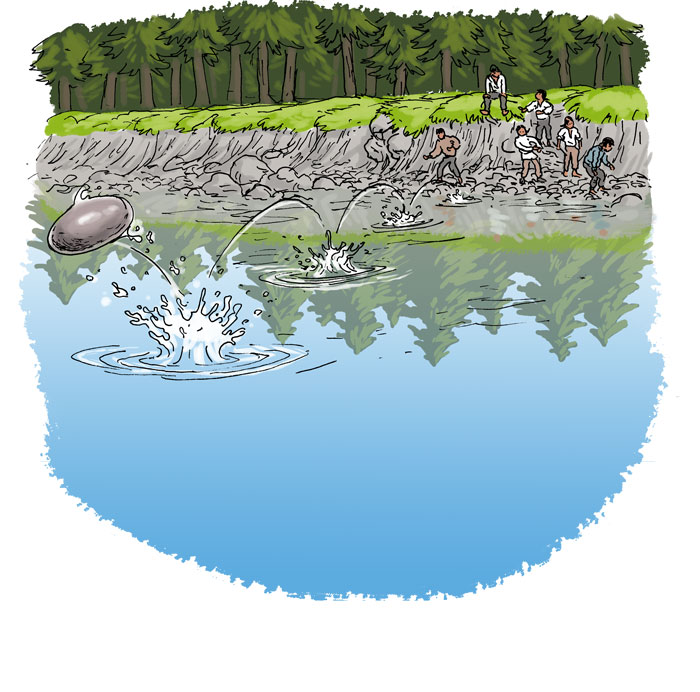Section 1.1 The Set of Real Numbers
The Real Numbers. It is likely that, up to this point in your studies of mathematics, you have used only real numbers, like 0,1,−0.5,π,247,−√11, and so on. There are two basic reasons why in mathematics we attach the adjective real to the noun numbers:Calculus is the study of how things change. It provides a framework for modelling systems in which there is change, and a way to deduce the predictions of such models. — Daniel Kleitman, Emeritus Professor of Applied Mathematics, Combinatorics, Operations Research, MIT, 1934 –
We use real numbers to deal with the real world, like for counting, measuring, and describing patterns and relationships among various quantities that we observe in the nature.
Later in your studies you will learn about the so-called imaginary numbers. As you may have already guessed, these numbers sometimes behave differently than the real numbers. Somewhat surprisingly, the imaginary numbers are sometimes a better mathematical tool to understand a real world phenomenon than the real numbers.
Inclusion: The set A is a subset of the set B if any element of the set A is an element of the set B as well. In this case we write A⊆B.
-
Intersection: If A and B are two sets then the set A∩B is called the intersection of the sets A and B and, by definition, contains all elements that belong to both A and B. In other words
A∩B={x:x∈A and x∈B}. -
Union: If A and B are two sets then the set A∪B is called the union of the sets A and B and, by definition, contains all elements that belong to A or to B. In other words
A∪B={x:x∈A or x∈B}.
The set of natural numbers: N={1,2,3,…}.
The set of whole numbers: N0={0,1,2,3,…}.
The set of integers: Z={…,−3,−2,−1,0,1,2,3,…}.
The set of rational numbers: Q={pq:p and q are integers, q≠0}.
The set of irrational numbers: I={x:x cannot be expressed as a ratio of two integers}.
The set of real numbers: R=Q∪I
Example 1.1.1. Rational and irrational numbers.
Recall that every rational number can be represented as a ratio of two integers in many ways.
For example, we can write the number “one half” in the following ways:
Also, recall that it is common to write the number “one half” in the so–called decimal notation: 0.5. Observe that 0.5 is just another way to represent the fraction 510.
Below is a “visual” proof that √2 is not rational. This way of proving the irrationality of √2 is attributed to Theodorus of Cyrene.
Observe that √2>1. Suppose that √2 is a rational number. Then there are positive integer p and q, p>q, such that √2=pq. This also means that we can construct an isosceles right triangle with its legs of the length q and its hypothenuse of the length p. See Figure 1.4. Thus, |¯AB|=|¯AC|=q, and |¯BC|=p. Pick the point D on the line segment ¯BC so that |¯CD|=q and then pick the point E on the line segment ¯AM so that ¯ED⊥¯BC. Now observe that △BDE is an isosceles right triangle such that |¯DE|=|¯DB|=p−q and |¯BE|=√2(p−q)=pq(p−q)=2q−p.
But this means that whenever we have an isosceles right triangle with all of its sides having integer lengths, then we can make a smaller isosceles right triangle with all of its sides having integer lengths. If we continue doing this, at one point the triangle will be so small that its legs will be of the length less than 1. This is a contradiction because 1 is the smallest positive integer.
Therefore, √2 is an irrational number.
Probably the most celebrated among all numbers is the irrational number π.
Example 1.1.2. Order of operations.
Evaluate:
2+3⋅4=
2+3⋅4−6÷3=
(2+3)⋅(4−6÷3)=
It follows:
\(\displaystyle 2+3\cdot 4=2+12=14\)
\(\displaystyle 2+3\cdot 4- 6\div 3=2+12-2=14-2=12\)
\(\displaystyle (2+3)\cdot (4- 6\div 3)=5\cdot (4-2)=5\cdot 2=10\)
Example 1.1.3. Inequality symbols.
Which statement is NOT TRUE: 2<3; −1>−2; 3≥2; −1>0<2; −1≤0?
See Figure 1.5.
\(-1\gt 0\lt 2\text{.}\) Why?

